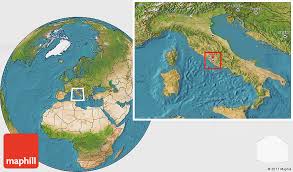What Are Hoka Hiking Boots?
Hoka hiking boots are rugged outdoor footwear designed by Hoka One One, a brand originally known for its ultra-cushioned running shoes. Over the years, Hoka has expanded its product line to include trail running shoes and technical hiking boots that blend maximum comfort with performance.
These boots are ideal for hikers, backpackers, and outdoor adventurers who want the perfect balance of lightweight design, foot support, and durability. Hoka hiking boots are known for their cloud-like cushioning, Vibram® outsoles, and waterproof membranes, making them a serious contender in the world of performance hiking gear.
Why Choose Hoka Over Other Hiking Boot Brands?
Hoka hiking boots stand out from competitors like Merrell, Salomon, and Columbia for several reasons:
- Maximum cushioning without excess weight
- Meta-Rocker geometry that improves forward momentum
- Vibram® Megagrip outsole for superior traction
- GORE-TEX® and eVent waterproofing in select models
- Comfortable right out of the box — little to no break-in time
These boots are especially favored by thru-hikers, trail runners, and long-distance backpackers looking to minimize fatigue on their feet.
Top Hoka Hiking Boot Models
Hoka Anacapa Mid GTX
A versatile, waterproof hiking boot with GORE-TEX® membrane, sustainable materials, and Vibram® outsole. Lightweight and great for moderate terrain.
- Best for: Day hikes, travel, light backpacking
- Waterproof: Yes (GORE-TEX)
- Weight: ~14 oz (men’s size 9)
🔗 View Hoka Anacapa Mid GTX – Hoka Official
Hoka Kaha 2 GTX
A more robust and rugged option for technical trails, offering maximum cushioning, ankle support, and excellent durability.
- Best for: Backpacking, steep trails, rough terrain
- Waterproof: Yes (GORE-TEX)
- Weight: ~18 oz (men’s size 9)
Hoka Trail Code GTX
A relatively newer model with modern aesthetics, lightweight build, and eco-friendly construction. Offers great comfort for mixed terrain.
- Best for: Casual hikers, beginners
- Waterproof: Yes (GORE-TEX)
- Weight: ~14.5 oz
These models cater to a wide range of users, from beginners to expert-level hikers who need all-day comfort on challenging terrain.
Key Features of Hoka Hiking Boots
1. Cushioning Technology
Hoka is famous for its thick EVA midsoles, which absorb impact better than most hiking boots. This reduces strain on joints and helps you hike longer without fatigue.
2. Meta-Rocker Design
This curved sole shape encourages a smooth heel-to-toe transition, making hiking feel more fluid and natural.
3. Waterproofing
Most Hoka hiking boots use GORE-TEX® or eVent waterproof membranes, providing reliable protection against wet conditions while remaining breathable.
4. Traction and Grip
High-end Vibram® Megagrip outsoles offer exceptional grip on wet, muddy, rocky, and dry terrain, reducing slip risk.
5. Ankle Support and Fit
Hoka boots feature mid-height collars with padded ankle zones, providing stability without feeling bulky.
6. Sustainability
Many Hoka models now include recycled polyester uppers, sugarcane-based EVA, and eco-friendly DWR coatings, showing their commitment to reducing environmental impact.
Who Should Buy Hoka Hiking Boots?
Hoka hiking boots are ideal for:
- Thru-hikers and backpackers needing long-distance comfort
- Day hikers wanting an easy break-in experience
- Older hikers or those with joint pain due to extra cushioning
- People switching from trail runners to boots
- Anyone prioritizing comfort over stiffness
They’re not ideal for technical mountaineering or heavy-duty winter hiking, but they excel in 3-season hiking, wet conditions, and general trail use.
How Hoka Hiking Boots Compare to Other Brands
| Brand | Strength | Hoka’s Advantage |
|---|---|---|
| Merrell | Durable, affordable | Hoka offers better cushioning |
| Salomon | Technical performance, precise fit | Hoka offers more comfort, less break-in |
| Keen | Wide toe box, toe protection | Hoka is lighter and more athletic |
| Lowa | Heavy-duty support | Hoka is more flexible and cushioned |
If your priority is lightweight comfort with serious grip, Hoka hiking boots beat most competitors in the comfort-to-weight ratio.
Sizing and Fit Tips
Hoka boots generally run true to size, but a few fit notes:
- Wide versions available in select models
- Toe box is roomy but less boxy than Keen
- Break-in time is minimal — usually good right out of the box
- Best to try them on with hiking socks or use retailer return policies
Hoka also provides a size guide online based on foot measurements.
🔗 Hoka Size Guide – Official Website
Maintenance and Care Tips
To prolong the life of your Hoka hiking boots:
- Clean after every hike using a brush and damp cloth
- Remove insoles and air-dry after use
- Reapply DWR coating every few months to maintain water resistance
- Store in a cool, dry place, away from direct sunlight
Never use a washing machine or dryer, as it may damage the materials and adhesives.
Pros and Cons of Hoka Hiking Boots
Pros:
- Unmatched cushioning for long hikes
- Waterproof and breathable
- Lightweight yet supportive
- Minimal break-in time
- Excellent grip on multiple terrains
- Sustainable material options
Cons:
- More expensive than some competitors
- Not ideal for very technical climbs
- Thicker soles can feel unstable to those used to minimal shoes
Conclusion: Are Hoka Hiking Boots Worth It?
If comfort, durability, and lightweight performance are your top priorities, then Hoka hiking boots are absolutely worth it. Whether you’re a weekend warrior or a serious backpacker, Hoka boots give you the confidence to hike longer with less fatigue.
Their combination of cutting-edge technology, eco-conscious design, and legendary cushioning makes them one of the best choices in modern hiking footwear.












